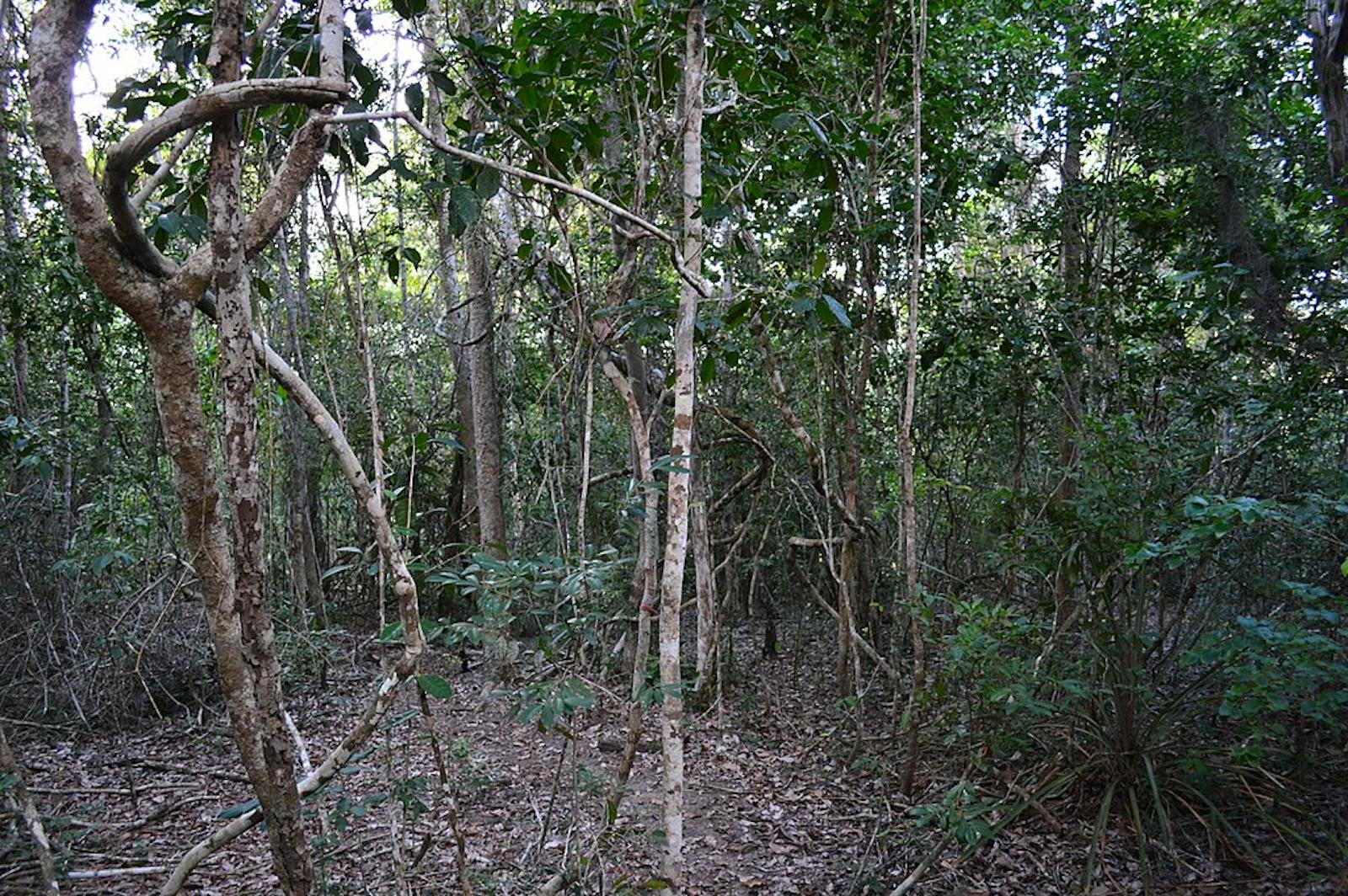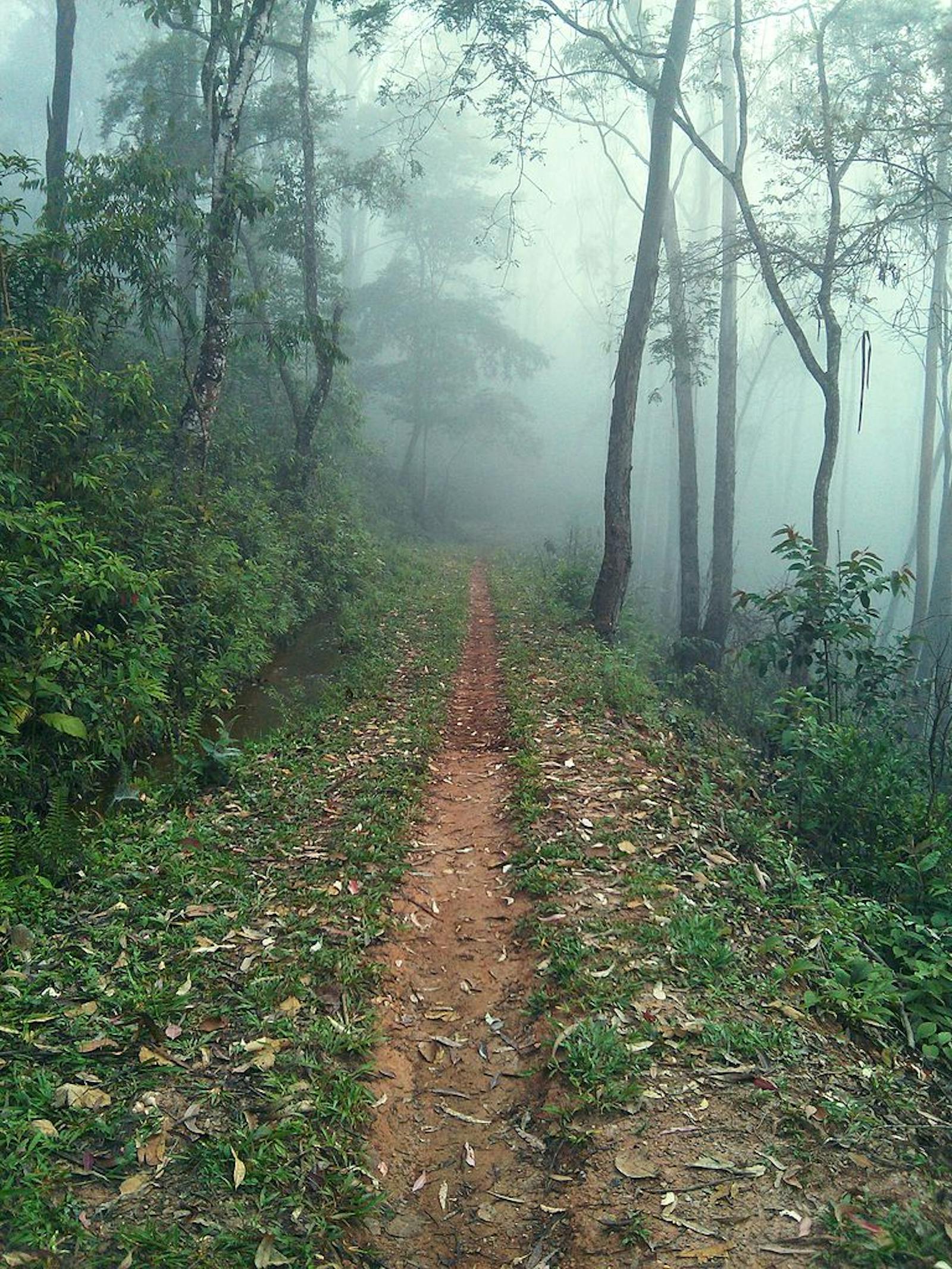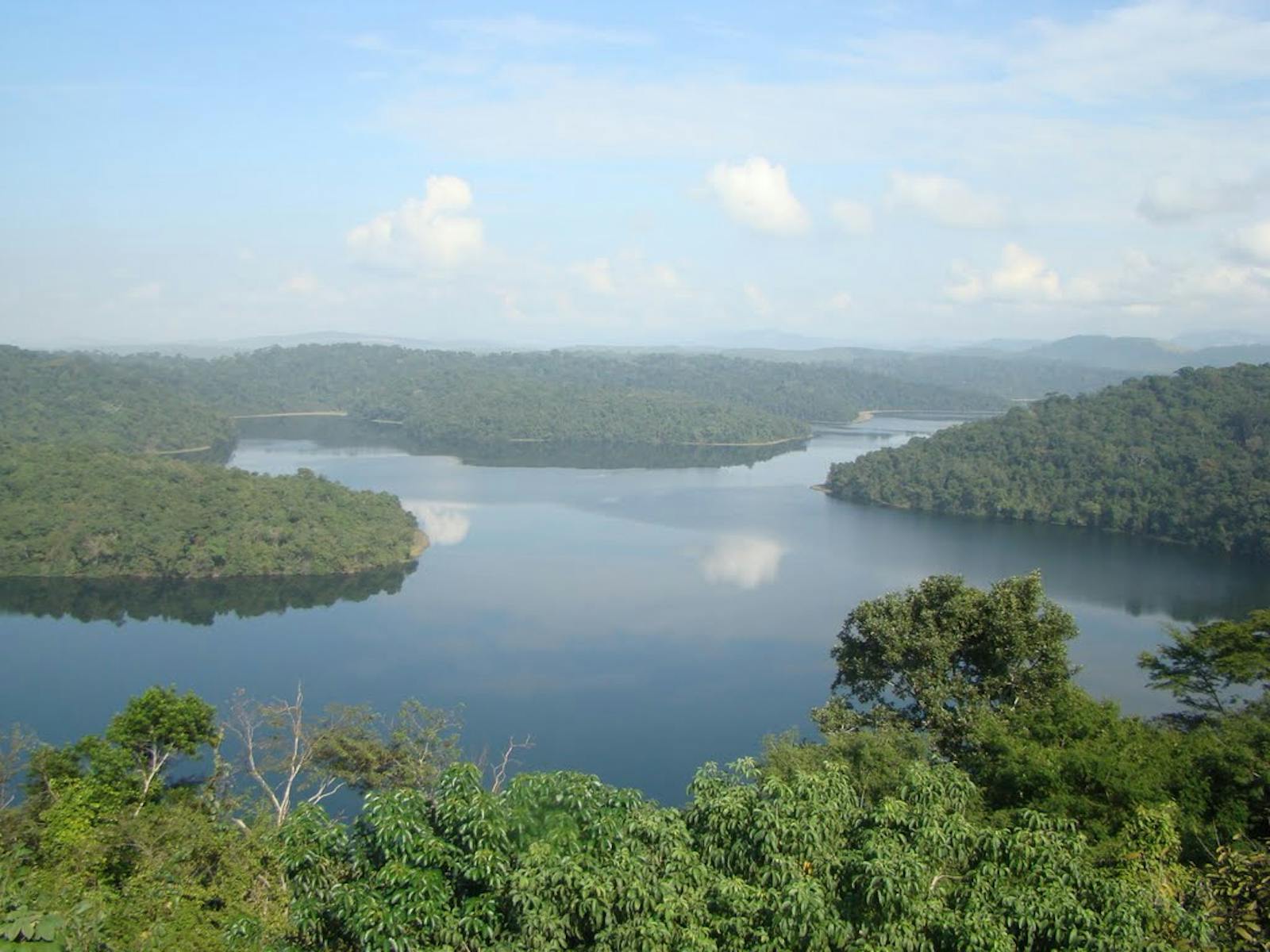Bahía Interior Forests
The ecoregion’s land area is provided in units of 1,000 hectares. The conservation target is the Global Safety Net (GSN1) area for the given ecoregion. The protection level indicates the percentage of the GSN goal that is currently protected on a scale of 0-10. N/A means data is not available at this time.
Bioregion: Brazilian Atlantic Moist Forests (NT14)
Realm: Southern America
Ecoregion Size (1000 ha):
23,048
Ecoregion ID:
443
Conservation Target:
23%
Protection Level:
2
States: Brazil
The little studied seasonal Bahía Interior Forest recently revealed a new species, the endemic Coimbra-Filho’s titi monkey. These small primates prefer densely wooded areas and spend most of their time in the lower and middle canopy foraging and socializing. Like most tit monkeys, they primarily eat leaves and occasionally fruit. They live in small family groups of 3–5 individuals and can be very territorial, defending their home range against rival neighbors and intruders. Their black head and neck together with their brown fuzzy body and prehensile tail give them a distinct appearance.
The Bahía Interior Forest ecoregion covers a large area, including the Brazilian states of Sergipe, Bahía, Minas Gerais, Espírito Santo, and Rio de Janeiro. These forests are bordered by the ecoregions of Bahía Coastal Forest to the east, Cerrado to the west, Caatinga to the north, and Alto Paraná Atlantic Forests to the south.
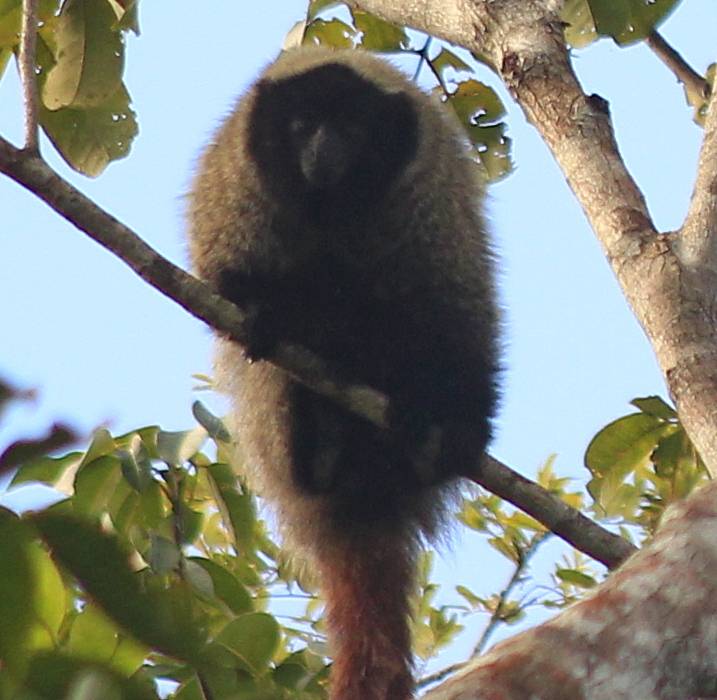
The flagship species of the Bahía Interior Forests ecoregion is the Coimbra-Filho’s titi monkey. Image credit: Creative Commons, Paiivaleiite
The dominant vegetation in this ecoregion is seasonal moist forest, but at least five other types of vegetation have been reported. This interior forest ecoregion encompasses several different geological substrates and several types of ground cover unities, which range from young depressions to old crystalline plateaus. Several climatic types are identified based on latitude and elevation variations. In general, the dominant climate is tropical, semi-humid, and has 3–5 dry months.
Average annual rainfall here varies between 1,000 and 1,750 mm, with an average annual temperature between 18° and 22°C. Seasonal forests can be semi-deciduous or deciduous. Seasonal semi-deciduous forests are well developed with large trees and predominate most of the ecoregion. Seasonal deciduous forests are more restricted in distribution, occurring mostly in southern Bahía in the Rio Pardo drainage, and in the northern Minas Gerais on oxygen-poor soils derived from limestone rocks.
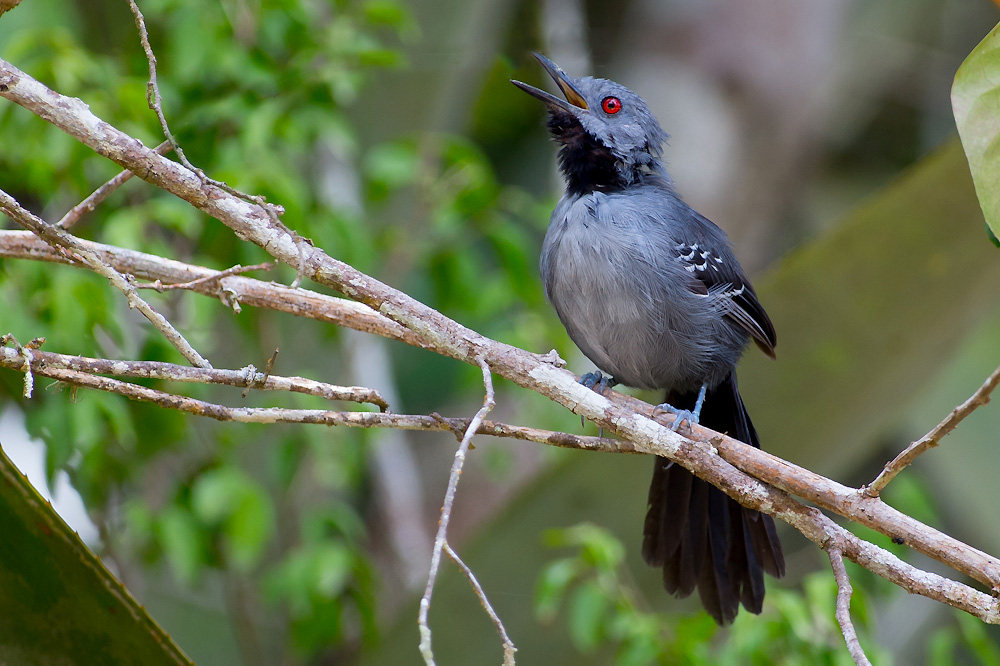
Slender Antbird (Rhopornis Ardesiaca). Image credit: Creative Commons
Lower in canopy height, deciduous forests are regionally identified as “vine forests” (“mata de cipó”). Important trees present are of the genera Cavanillesia, mahogany, legumes, and tropical shrubs.
The Bahía Interior Forests still have much that is unknown, but the presence of range-restricted species indicates that these forests are composed of several distinct biogeographic units. The relatively unexplored seasonal forests in Sergipe are home to a recently described endemic primate species, the Coimbra-Filho’s titi monkey. This discovery may indicate that there are other undescribed endemic species in the forests.
The seasonal deciduous forest is also a well-known center of endemism for birds, consisting of two very specialized species of antbirds—slender antbird and narrow-billed antbird. Focal mammals for conservation include the Geoffroy’s tufted-eared marmoset and the endangered southern woolly spider monkey.
%20in%20Carlos%20Botelho%20State%20Park.%20Author%20Leonardo%20Desordi%20Lobo%2C%20cc%20Brachyteles_arachnoides_1.jpeg)
Southern wooly spider monkey (Brachyteles arachnoides). Image credit: Leonardo Desordi Lobo, Creative Commons
Bahía Interior Forests are one of the most modified ecoregions in the Atlantic forest region. There are few large remnants of forests with more than 10 km2 that remain intact. These intact remnants are currently under strong anthropogenic pressures. Only a small fraction of this ecoregion is officially protected as either a reserve or park. The most representative park of this ecoregion is the State Park of Rio Doce, which covers 359 km2 and is located in the middle valley of the Rio Doce.
Critical areas with endemic species, such as Sergipe’s semi-deciduous forests and Bahía’s deciduous forests, remain unprotected and are priority areas for conservation actions. The priority conservation actions for the next decade are to 1) create restricted use protected areas targeted at endemic and threatened species conservation; 2) establish forest corridors to interconnect existing forest patches; and 3) work with local governments to create incentives to conserve forests and species.
Citations
1. da Silva, Jose Maria C. 2018. Bahia Interior Forest. https://www.worldwildlife.org/ecoregions/nt0104. 2 July 2018.
2. Stattersfield, A.J., M.J. Crosby, A.J. Long, and D.C. Wege. 1998. Endemic bird areas of the world: Priorities for conservation. BirdLife International, Cambridge, UK.
3. Sick, H. 1993. Birds in Brazil: A natural history. Princeton: Princeton University Press.
